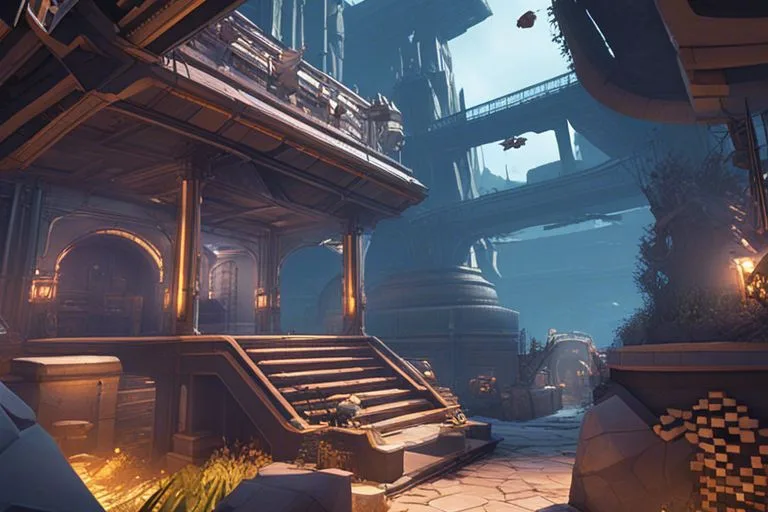Exploring 3D Game Engines
It’s a thrilling time to explore into the world of 3D gaming, where immersive worlds and realistic graphics come together to create an unparalleled gaming experience.
In this blog post, we will take a deep look into 3D game engines, the backbone of modern video game development, and explore the ins and outs of creating captivating 3D games.
Your journey into 3D game engines begins with a deep examine their history and evolution. Understanding the origins and development of these powerful tools is crucial to grasping the incredible advancements that have propelled the gaming industry forward.

Early Developments in 3D Graphics
Any exploration of 3D game engines must acknowledge the early developments in 3D graphics that laid the foundation for their creation. In the 1970s and 1980s, pioneers in computer graphics such as Ivan Sutherland and Ed Catmull paved the way for three-dimensional rendering with groundbreaking technologies like the Sketchpad system and the development of the first 3D texture mapping algorithms.
As computer hardware capabilities expanded in the 1990s, advancements in rendering techniques and hardware acceleration led to the emergence of true 3D games. This era saw the rise of early 3D game engines like the Build Engine, the Quake Engine, and the Unreal Engine, which revolutionized the gaming landscape and set the stage for the sophisticated engines we see today.
Milestone Game Engines and Their Impact
Graphics in modern video games have progressed leaps and bounds from the pixelated images of the past. Milestone game engines such as the CryEngine, Unity, and Frostbite Engine have played a pivotal role in pushing the boundaries of realism and immersion in gaming experiences.
These engines have not only empowered developers to create visually stunning worlds but have also enabled complex physics simulations, dynamic lighting effects, and intricate character animations.
This relentless pursuit of realism and innovation in game engines has not only elevated the gaming industry to new heights but has also fueled competition among developers to deliver cutting-edge graphics and gameplay experiences.
The impact of milestone game engines reverberates throughout the gaming community, inspiring new generations of developers and setting the standard for the future of interactive entertainment.
Core Components of 3D Game Engines
Some of the key components that make up 3D game engines are crucial for creating immersive and engaging gaming experiences. These components work together seamlessly to bring virtual worlds to life, allowing players to interact with stunning visuals, realistic physics, captivating sound effects, intelligent non-player characters (NPCs), and seamless online multiplayer capabilities.
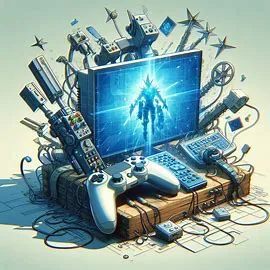
Graphics Rendering Pipeline
Components of the graphics rendering pipeline are responsible for transforming 3D models and textures into the stunning visuals that players see on their screens. This process includes stages such as geometry processing, rasterization, shading, and texturing.
By efficiently handling these tasks, game engines can deliver high-quality graphics that enhance the overall gaming experience and immerse players in the virtual world.
Advanced rendering techniques such as ray tracing and physically based rendering (PBR) have become increasingly popular in modern game engines, allowing for realistic lighting, shadows, and reflections.
These technologies push the boundaries of visual fidelity in games and help developers create visually stunning environments that captivate players.
Physics Simulation
To create realistic interactions between objects and characters in the game world, physics simulation components play a crucial role. These components simulate gravity, collision detection, and object dynamics to ensure that the virtual world behaves in a consistent and believable manner.
By incorporating physics engines like NVIDIA PhysX or Bullet Physics, game developers can achieve authentic physics-based gameplay that enhances the player’s immersion.
The integration of physics simulation into game engines allows for dynamic environments where objects react to forces and collisions in a natural way. Whether it’s simulating the impact of a car crash or the bouncing of a basketball, realistic physics contribute to the overall realism and interactivity of the game world.
Sound Processing
The sound processing components of a game engine are responsible for creating immersive audio experiences that complement the game’s visuals. Sound effects, ambient noise, music, and voice acting all contribute to the overall atmosphere and mood of the game.
By utilizing advanced audio technologies like spatial audio and dynamic mixing, game engines can deliver realistic and engaging soundscapes that draw players into the game world.
Any inconsistencies or delay in sound processing can disrupt the player’s immersion and detract from the overall gaming experience. By prioritizing seamless audio integration and high-quality sound processing, game developers can ensure that the auditory component of their games enhances the gameplay and storytelling.
Artificial Intelligence
Rendering intelligent NPCs and creating immersive interactions with non-player characters are key goals of the artificial intelligence components in game engines. These components enable NPCs to exhibit adaptive behaviors, decision-making capabilities, and realistic responses to player actions.
By leveraging AI algorithms such as pathfinding, behavior trees, and neural networks, game developers can create dynamic and challenging gameplay experiences that keep players engaged.
The AI pipeline in game engines plays a crucial role in shaping the player’s experience by providing believable and intelligent NPCs that enhance the storytelling and gameplay elements. By fine-tuning AI parameters and behaviors, developers can create memorable encounters and scenarios that make the virtual world feel alive and responsive.
Networking and Multiplayer Support
Rendering seamless online multiplayer experiences requires robust networking components in game engines. These components handle tasks such as server-client communication, latency optimization, and synchronization of game states between players.
By implementing reliable networking protocols and scalable server architectures, game engines can support large-scale multiplayer battles, cooperative gameplay, and social interactions in virtual worlds.
Artificially lowering player ping, prioritizing packet loss mitigation, and implementing cheat detection algorithms are critical aspects of networking and multiplayer support in game engines.
By ensuring a stable and fair online environment, developers can foster a positive multiplayer community and provide players with engaging and competitive gaming experiences.
Popular 3D Game Engines
Unlike 2D game development, 3D games engines provide a more immersive and realistic gaming experience. Let’s explore some of the most popular 3D game engines used by developers worldwide.
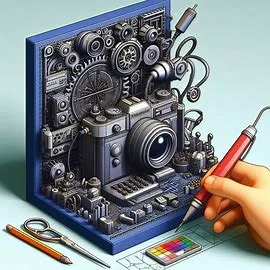
Unreal Engine
Unreal Engine, developed by Epic Games, is a powerhouse in the world of game development. It is known for its stunning graphics, advanced physics, and robust rendering capabilities.
One of the standout features of Unreal Engine is its Blueprint visual scripting system, allowing developers to create complex gameplay mechanics without writing a single line of code.
Unreal Engine is widely used to create high-end AAA games, virtual reality experiences, and architectural visualizations. Its user-friendly interface and extensive documentation make it a top choice for both indie developers and major studios.
Unity
Unity is another popular 3D game engine that has gained a significant following in the game development community. It is known for its cross-platform support, intuitive interface, and vast asset store, providing developers with a plethora of resources to enhance their creations. Made for both 2D and 3D game development, Unity is perfect for creating mobile games, AR/VR applications, and more.
CryEngine
With its cutting-edge graphics and powerful rendering capabilities, CryEngine is a favorite among developers looking to create visually stunning games. The engine’s real-time lighting system and advanced particle effects allow for unparalleled realism and immersion in virtual worlds.
Unreal Engine offers a range of tools and features for building expansive open-world environments, cinematic cutscenes, and dynamic AI systems.
Proprietary Engines of Major Studios
With major studios like Rockstar Games, Naughty Dog, and Blizzard Entertainment developing their proprietary game engines, the gaming industry has seen some of the most groundbreaking titles created using these engines.
These proprietary engines are tailored specifically to the needs of the studio, offering unparalleled performance, graphical fidelity, and optimization.
Comparing 3D Game Engines
Keep in mind that choosing the right 3D game engine is crucial for the success of your project. To help you make an informed decision, let’s compare some of the top 3D game engines available in the market.
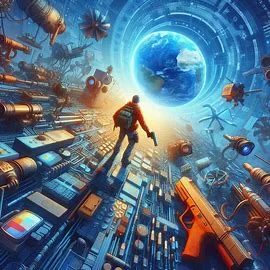
Performance Benchmarks
With performance benchmarks, it is necessary to evaluate how efficiently each 3D game engine handles rendering, physics simulations, and overall game optimization. Conducting tests on different hardware configurations can provide insights into the engine’s capabilities under various conditions.
Another important aspect is the scalability of the engine, ensuring that it can support your project’s requirements as it grows in complexity. By analyzing performance benchmarks, you can identify the engine that best meets your performance needs.
Licensing and Cost Considerations
Benchmarks in licensing and cost considerations are crucial when selecting a 3D game engine. Some engines offer free or open-source options, while others require a subscription or one-time payment. It’s necessary to evaluate the licensing terms and associated costs to align with your budget and project goals.
Plus, understanding the level of technical support and updates provided by the engine’s developers is necessary for long-term sustainability. Consider the licensing model and associated costs carefully to ensure a smooth development process without unexpected expenses.
Community Support and Resources
On the flip side, community support and resources can significantly impact your development experience. Engaging with a strong and active community can provide valuable insights, resources, and solutions to potential challenges you may encounter during development.
Resources such as documentation, forums, tutorials, and plugins can accelerate your learning curve and streamline the development process. Choosing a 3D game engine with a vibrant and supportive community can enhance your project’s success and overall development experience.
The Development Process Using 3D Game Engines

Many game developers start the development process by using 3D game engines to bring their creative visions to life. During the game design and preproduction phase, developers focus on conceptualizing the game, creating the storyline, designing characters, and planning the overall gameplay mechanics. This phase lays the foundation for the entire development process and serves as a roadmap for the rest of the project.
Using 3D game engines, developers can create prototypes and mockups to test gameplay ideas and refine the game mechanics before moving on to full-scale production. This iterative process allows developers to experiment with different concepts, gather feedback, and make necessary adjustments to ensure a smooth development pipeline.
Asset Creation and Management
Using 3D game engines, developers can efficiently manage assets such as 3D models, textures, animations, and sound effects. Asset creation and management play a crucial role in maintaining a consistent art style and optimizing resource utilization. Developers can integrate assets into the game engine, organize them into libraries, and easily reuse them across different levels and scenes.
To streamline asset creation and management, developers often utilize specialized software tools and plugins that are compatible with 3D game engines. These tools help automate tasks such as texture mapping, rigging, and animation, allowing developers to focus more on the creative aspects of game development.
Coding and Programming
A necessary part of game development involves coding and programming functionalities within the game using the capabilities of 3D game engines. Developers write scripts and code to implement game logic, control AI behavior, manage game states, and optimize performance. The coding and programming phase requires a strong understanding of programming languages and the game engine’s APIs.
An important aspect of coding and programming is optimizing the game’s performance and ensuring smooth gameplay. Developers often conduct extensive testing and profiling to identify and eliminate bottlenecks, memory leaks, and other performance issues. By fine-tuning the code, developers can enhance the overall player experience and deliver a polished game.
Testing and Debugging
To ensure the game meets quality standards, thorough testing and debugging are necessary parts of the development process. Developers conduct various tests, including functionality testing, performance testing, compatibility testing, and regression testing. By identifying and fixing bugs and issues in the game, developers can deliver a stable and bug-free gaming experience.
It is crucial to involve QA testers and gather feedback from beta testers during the testing and debugging phase. This feedback helps developers identify areas for improvement, address gameplay issues, and make necessary refinements before the game is released to the public.
Deployment and Distribution
Using 3D game engines, developers can easily package and deploy their games across different platforms, including PC, mobile, and console. Developers optimize the game for specific platforms, create installers, and ensure compatibility with hardware specifications.
The deployment and distribution phase involves submitting the game to digital storefronts, such as Steam or the App Store, and reaching a global audience.
Asset management tools integrated into 3D game engines help developers track and update assets throughout the game’s lifecycle, making it easier to distribute patches, updates, and downloadable content. This streamlined process ensures that players receive the latest features and improvements, enhancing the overall gaming experience.
Future Directions in 3D Game Engine Technology
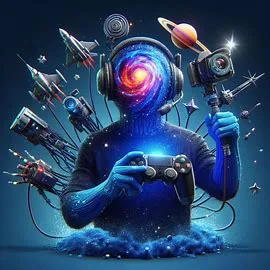
The landscape of real-time rendering in 3D game engines is constantly evolving. The demand for more realistic graphics with lifelike lighting, shadows, and textures has pushed developers to innovate and optimize rendering techniques.
The integration of advanced ray tracing technologies, global illumination, and shader improvements has led to breathtaking visuals in modern games.
The future of real-time rendering holds promising advancements such as real-time ray tracing becoming more accessible, enhancing visual fidelity even further. Advancements in hardware capabilities, like next-gen GPUs and CPUs, will also play a significant role in pushing the boundaries of what is possible in real-time rendering.
Integration with Emerging Technologies (VR/AR)
With the rise of Virtual Reality (VR) and Augmented Reality (AR), game engines are integrating with these emerging technologies to provide immersive and interactive experiences. Engine developers are working on optimizing performance and creating tools that cater to the unique demands of VR/AR development, such as motion tracking and spatial audio.
The Role of AI in Game Engine Development
The integration of Artificial Intelligence (AI) in game engine development is reshaping the way games are created and experienced. AI algorithms are being used for procedural content generation, NPC behaviors, and dynamic difficulty adjustment, providing more personalized and engaging gameplay experiences.
The future of AI in game engines holds potential for more intelligent NPCs, improved game testing procedures, and enhanced player immersion.
This intersection of AI and game development opens up new possibilities for dynamic storytelling, adaptive game design, and more efficient development pipelines. This symbiotic relationship between AI and game engines will continue to drive innovation and shape the future of interactive entertainment.
Open-Source Trends and Community Contributions
An increasing trend in 3D game engine development is the adoption of open-source practices and the active involvement of the developer community in contributing to engine improvement. To foster innovation and collaboration, major game engine projects are opening up their source code, allowing developers to customize and extend functionalities to suit their specific needs.
Final Words
With this in mind, it is evident that 3D game engines play a crucial role in shaping the landscape of modern gaming. From creating visually stunning environments to optimizing performance, game engines are at the core of delivering immersive gaming experiences to players around the world.
By exploring the intricacies of 3D game engines, developers can harness the power of these tools to bring their creative visions to life and push the boundaries of what is possible in the world of gaming.
As technology continues to advance, we can expect 3D game engines to evolve and introduce new capabilities that will further revolutionize the gaming industry. By staying informed and experimenting with different engines, developers can stay ahead of the curve and continue to create innovative and captivating games that captivate audiences worldwide.
The future of gaming is indeed exciting, and 3D game engines will continue to play a pivotal role in shaping the experiences of gamers for years to come.

